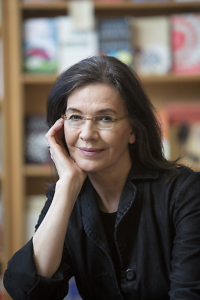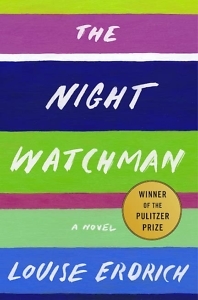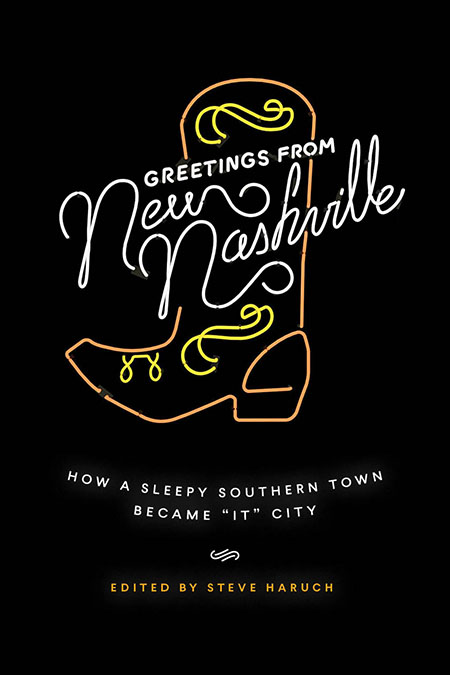True Feeling, Not Magic
An appreciation of Louise Erdrich, recipient of the 2022 Nashville Public Library Literary Award
From the first moment that we heard Louise Erdrich’s voice, we knew we had discovered a unique talent – more than that, a portal to a new world. Love Medicine introduced Erdrich’s literary landscape, the North Dakota of the Ojibwe tribe and neighboring regions, populated by a broad cast of lovers and fighters, ne’er-do-wells and saints, strivers and bankrupts. Her world was so fully realized, replete with historical schisms and mythological lore, that her debut novel felt like a continuation of an old treasury of tales.

Each subsequent volume from Erdrich wove further strands back in time, to wars and resettlements, broken treaties and new communities, and forward as later generations strike out beyond the rez for jobs and relationships. They roam, for example, to Minneapolis, where in The Sentence a character named Louise, a writer, owns a bookstore that bears remarkable resemblance to Erdrich’s own Birchbark Books. That her fictional bookstore is haunted seems perfectly apt; the possibility of its real counterpart being haunted would in no way deter a fan like me from shopping there. To be harassed by Flora (the ghostly presence in The Sentence) would make me feel as if I were an honored guest in the Erdrichian cosmos.
In the absence of that privilege, I am happy to access her world via her 17 novels, which vary in structure, style, mood, and message, yet somehow cohere into a recognizable universe. Her novels don’t merely overlap with recurring places (prominently, the Turtle Mountain Reservation) and events (land grabs by the U.S. government, the Vietnam War); they feel as if they belong to the same, interconnected web of narrative. Even when the tone of the novels changes — from the somber purpose of The Night Watchman to the dark comedy of The Sentence — we read them as movements in a symphony.
Asked by a Paris Review interviewer if she felt as if she were creating “one long novel,” Erdrich explained the continuity. “All of the books will be connected somehow — by history and blood and by something I have no control over, which is the writing itself.”
 Erdrich has said that in writing she seeks to enter a trance state, when the characters and voices flow into her mind without conscious control. The paradox is that achieving those moments when the subconscious takes over requires hard work. She writes continually, pulling her car off the highway to scribble notes and hiding from her family to indite ideas. From that labor, stories emerge that have the effortless fluidity of folk tales. The experience of reading her novels corresponds to Erdrich’s ideal: Her fiction transports you from the mundane details of existence to the mythic plane where storytelling moves with the natural inevitability of springtime rain.
Erdrich has said that in writing she seeks to enter a trance state, when the characters and voices flow into her mind without conscious control. The paradox is that achieving those moments when the subconscious takes over requires hard work. She writes continually, pulling her car off the highway to scribble notes and hiding from her family to indite ideas. From that labor, stories emerge that have the effortless fluidity of folk tales. The experience of reading her novels corresponds to Erdrich’s ideal: Her fiction transports you from the mundane details of existence to the mythic plane where storytelling moves with the natural inevitability of springtime rain.
Because her work is rooted in a region, with recurring characters who are haunted by the past, Erdrich is compared to Faulkner. Because her Chippewas occasionally make use of ancient potions or encounter the ghosts of beloved dead, critics label her a magic realist, her North Dakota a Native American version of Gabriel García Márquez’s Macondo. At this point in her career, though, neither comparison is adequate to capture her style or vision. Next to Faulkner’s recursive spirals, Erdrich’s narratives are models of momentum and resolution. And her magic rarely involves García-Márquezian flights of young women into the ether. Erdrich’s characters are tempest-tossed by their own passions, not elixirs. “It’s a true feeling,” a character says in Love Medicine, “not no magic.”
A more revealing parallel is to stack Erdrich’s oeuvre next to that of Mario Vargas Llosa, the Peruvian novelist who won the Nobel Prize in Literature in 2010. Like Vargas Llosa, Erdrich launched her career with a series of exceptional novels that gained a broad readership, critical praise, and attention from academia. Professors who in the 1960s and ‘70s taught Vargas Llosa’s The Green House as part of the Latin American “boom” began to teach Erdrich’s Tracks and The Beet Queen as part of a Native American renaissance in the ‘80s and ‘90s.
In the middle of his career, Vargas Llosa experimented with form and genre before producing an epic masterpiece, The War of the End of the World, a fictionalized account of Brazil in the 19th century that showcases the author’s stylistic ingenuity alongside his political perspicacity. Erdrich similarly reached a mid-career apogee with the connected novels The Plague of Doves (2008) and The Round House, the latter winning the National Book Award in 2012. Those novels, dramatically different in structure, depict the long-term effects of horrific violence on small communities and their halting attempts to achieve justice. With the success of those novels, Erdrich cemented her place among the first rank of American novelists.
What is remarkable about Vargas Llosa and Erdrich is that, after several decades of producing distinctive and celebrated works, they continued to stretch themselves creatively. In the 2000s, Vargas Llosa had a run of acclaimed novels — including The Feast of the Goat and The Bad Girl — that culminated in his getting the nod from Stockholm.
Erdrich’s two most recent novels, The Night Watchman and The Sentence, suggest that she too has tapped into new sources of material and has devised new vehicles for storytelling. In my view, she has already carved out a niche in world literature that deserves Nobel recognition. If she maintains this profusion of literary brilliance, the momentum for her to win that honor will become inexorable.

Sean Kinch grew up in Austin and attended Stanford. He earned a Ph.D. from the University of Texas. He now teaches English at Montgomery Bell Academy in Nashville.


